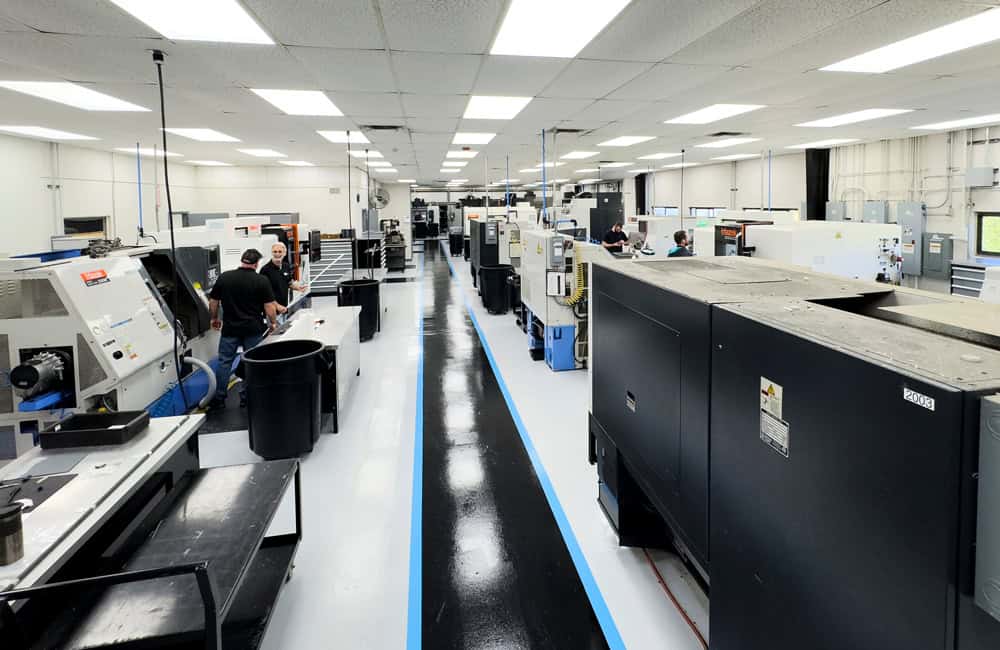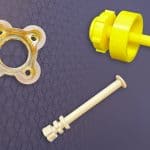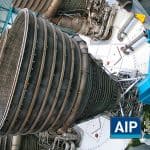
Advanced polymers have revolutionized aerospace engineering, ushering in a new era of innovation and performance. These cutting-edge materials offer vast benefits, including exceptional strength-to-weight ratios, high temperature resistance, and superior durability. As the aerospace industry continues to push the boundaries of what’s possible, advanced polymers play a crucial role in enhancing the safety, efficiency, and reliability of aircraft and spacecraft components.
From fuel systems to structural parts, advanced polymers like PEEK, ULTEM®, and Vespel® are transforming the aerospace landscape. These materials boast remarkable properties such as low friction, non-flammability, and exceptional wear resistance, making them ideal for use in critical applications. The integration of these polymers in seals, bearings, and other vital components has led to significant improvements in overall performance and safety. This article explores the groundbreaking ways advanced polymers are shaping the future of aerospace technology and their far-reaching implications for the industry.
Key takeaways
| Key Takeaways | Details |
| Revolutionary Role of Advanced Polymers | Advanced polymers are critical in transforming aerospace engineering by enhancing performance, safety, and reliability. |
| Key Materials in Use | Polymers such as PEEK, ULTEM, and Vespel offer high strength-to-weight ratios, heat resistance, and durability essential for aerospace applications. |
| Specific Aerospace Applications | These materials are utilized in a wide range of components, including structural parts, seals, bearings, thermal protection systems, and propulsion components. |
| Benefits Over Traditional Materials | Advanced polymers provide significant advantages over metals, including weight reduction, improved fuel efficiency, and better resistance to harsh environments. |
| Future Impact on Aerospace Technology | Continued research and development in advanced polymers will drive further innovations, leading to more efficient and sustainable aerospace technologies. |
Innovative Polymer Materials in Aerospace
Advanced polymers have revolutionized aerospace engineering, offering exceptional properties that enhance aircraft performance and safety. High-performance thermoplastics, advanced composites, and specialty elastomers are at the forefront of this innovation.
High-Performance Thermoplastics
Thermoplastics like PEEK, ULTEM®, and CELAZOLE provide remarkable heat resistance and mechanical strength. PEEK, for instance, maintains its properties at temperatures up to 480°F, making it ideal for harsh aerospace environments. ULTEM®, with its high dielectric strength, serves as an excellent electrical insulator in aircraft components.
Advanced Composites
Carbon fiber reinforced polymers (CFRPs) have transformed aircraft construction. These materials offer significant weight savings compared to traditional metals, leading to improved fuel efficiency. For example, Boeing’s 787 Dreamliner, which extensively uses composites, achieves 20% better fuel efficiency than its predecessor.
Specialty Elastomers
Elastomers play a crucial role in aerospace applications, providing flexibility and durability in critical components. Fluoroelastomers, in particular, have gained prominence due to their exceptional resistance to heat and chemicals. These materials find extensive use in aircraft engines and fuel handling systems, enhancing overall performance and safety.
Polymer Innovations for Space Exploration
Thermal Protection Systems
Advanced polymers play a crucial role in thermal protection systems for spacecraft. NASA’s Thermal Protection Materials Branch developed PICA (Phenolic Impregnated Carbon Ablator), a low-density heat shield material designed to protect spacecraft during atmospheric entry. TUFROC (Toughened Uni-piece Fibrous Reinforced Oxidation-Resistant Composite), another innovation, serves as a reusable thermal protection material for space launch services. These materials undergo rigorous testing and characterization using advanced instruments like Thermal Gravimetric Analysis and Differential Scanning Calorimetry.
Radiation Shielding
Highly hydrogenated polymers excel in radiation shielding for space applications. Kevlar, known for its impact resistance and flexibility, demonstrates shielding effectiveness comparable to polyethylene. With 10 g/cm² of Kevlar shielding, dose rate and dose equivalent rate reductions of over 30% and 50%, respectively, have been documented. This makes Kevlar an optimal candidate for integrated shielding approaches in spacecraft exteriors and EVA suits.
Propulsion Components
LMPAEK™ polymers have revolutionized aerospace propulsion components. These high-performance materials offer exceptional strength-to-weight ratios, heat resistance, and chemical resistance. Their versatility allows for complex shapes and intricate geometries, enabling innovative designs in propulsion systems. Additionally, LMPAEK™ polymers are compatible with additive manufacturing techniques, facilitating efficient production processes. The recyclability of these polymers aligns with the industry’s focus on sustainability, contributing to reduced waste and lower carbon emissions in aerospace applications.
Performance Characteristics of Aerospace Polymers

Advanced polymers in aerospace applications exhibit exceptional performance characteristics. These materials offer high temperature resistance, with some withstanding temperatures up to 300°C. Their chemical compatibility ensures resistance to jet fuel, hydraulic fluids, and other harsh substances. Mechanical strength is paramount, with materials like PEEK and ULTEM® providing excellent strength-to-weight ratios. Flame retardancy is crucial, with many polymers meeting FAR 25.853 standards. Low friction properties, exemplified by PTFE, enhance efficiency. Thermal insulation capabilities protect sensitive components from extreme temperatures. Wear resistance and chemical resistance further contribute to the longevity and reliability of aerospace components.
Revolutionary Polymer Types in Aerospace
Advanced polymers have revolutionized aerospace engineering, offering exceptional properties that enhance aircraft performance and safety. These materials provide unparalleled benefits, including high strength-to-weight ratios, temperature resistance, and durability. Let’s explore some of the most revolutionary polymer types used in aerospace applications.
PEEK (Polyether Ether Ketone)
PEEK has become ubiquitous in aerospace manufacturing due to its exceptional strength-to-weight ratio and resistance to extreme temperatures and chemicals. It maintains its mechanical properties at elevated temperatures, making it ideal for aircraft components. PEEK’s applications include flight control components, fuel systems, and engine-related parts. Its low density results in substantial weight reductions compared to metal alternatives, contributing to improved fuel efficiency.
PEKK (Polyetherketoneketone)
PEKK, another high-performance polymer, offers similar benefits to PEEK but with enhanced properties in certain areas. It has a higher strength-to-weight ratio and better chemical resistance, making it suitable for demanding aerospace applications. PEKK’s ability to withstand extreme temperatures and its excellent flame retardancy make it a valuable material for aircraft interiors and structural components.

PEI (Polyetherimide)
PEI, also known as ULTEM®, is an amorphous thermoplastic that exhibits outstanding mechanical strength, heat resistance, and flame retardancy. It has become a top choice for many demanding aerospace applications due to its exceptional high-temperature dimensional stability. PEI sheets are extensively used in aircraft interiors, light covers, and flight data recorder housings. Its low flammability and smoke density contribute to aircraft safety.
PTFE (Polytetrafluoroethylene)
PTFE, commonly known as Teflon®, has an incredibly low friction coefficient, making it ideal for use in aircraft components where smooth operation and reduced wear are crucial. It can withstand temperatures ranging from -200°C to 260°C without degrading, making it excellent for applications like fuel lines and hydraulic systems. PTFE’s exceptional electrical insulation capabilities also make it useful for components requiring electrical insulation or shielding.
ULTEM®
ULTEM®, a branded name for polyetherimide (PEI), is known for its strength, chemical resistance, and ability to withstand extremely high temperatures while retaining stable electrical properties. It is often used in the production of circuit boards, food preparation equipment, and aircraft parts. ULTEM®’s flame resistance and minimal smoke production make it an excellent choice for aerospace applications, meeting FAA regulations for flammability.
Vespel®
Vespel®, a high-performance polyimide, combines the best properties of ceramics, metals, and plastics. It offers superior performance in critical aircraft parts, including bearings, seals, and bushings. Vespel®’s high elastic limit, low wear rate, and excellent chemical resistance make it ideal for protecting components from thermal damage and replacing parts prone to corrosion. Its ability to function at temperatures up to 550ºF continuously enhances safety in high-temperature environments.
These revolutionary polymer types have transformed aerospace engineering, offering lightweight, durable, and high-performance alternatives to traditional materials. Their unique properties contribute to improved fuel efficiency, enhanced safety, and increased reliability in aircraft and spacecraft components.
Conclusion
Advanced polymers have ushered in a new era in aerospace engineering, offering game-changing benefits that boost aircraft performance and safety. These cutting-edge materials, from high-performance thermoplastics to advanced composites and specialty elastomers, have a profound impact on various aspects of aerospace technology. Their unique properties, including exceptional strength-to-weight ratios, heat resistance, and durability, have led to significant improvements in fuel efficiency, reliability, and overall performance of aircraft and spacecraft components.
The widespread adoption of these innovative materials in aerospace applications marks a significant leap forward in the industry. From PEEK and PEKK to PEI and PTFE, each polymer type brings its own set of advantages to enhance specific aerospace components and systems. As the aerospace sector continues to evolve, the role of advanced polymers in shaping its future cannot be overstated.
At AIP Precision Machining, we are committed to driving innovation in aerospace applications through our expertise in precision machining of advanced polymers. With industry-leading certifications such as AS 9100, ISO 13485, and ISO 9001, we ensure that every component we produce meets the highest standards of quality and reliability. Whether you’re developing new aerospace technologies or enhancing existing systems, our team is ready to partner with you to deliver custom-tailored solutions that meet your specific needs.
Discuss your specific aerospace challenges with our experienced engineers today. The ongoing research and development in this field promise even more groundbreaking advancements, paving the way for safer, more efficient, and more sustainable air and space travel.
Frequently Asked Questions (FAQs)
1. What are advanced polymers, and why are they important in aerospace applications?
Advanced polymers are high-performance materials engineered to offer superior properties such as exceptional strength-to-weight ratios, high temperature resistance, and excellent durability. In aerospace applications, these polymers are crucial because they enhance the performance, safety, and reliability of aircraft and spacecraft components, enabling engineers to push the boundaries of aerospace technology.
2. Which advanced polymers are commonly used in aerospace applications?
Some of the most commonly used advanced polymers in aerospace include:
- PEEK (Polyether Ether Ketone): Known for its high strength-to-weight ratio and resistance to extreme temperatures and chemicals.
- ULTEM® (Polyetherimide): Offers high dielectric strength, making it ideal for electrical insulation.
- Vespe®l (Polyimide): Combines the best properties of ceramics, metals, and plastics, making it suitable for critical high-temperature applications.
3. How do advanced polymers improve fuel efficiency in aerospace engineering?
Advanced polymers like carbon fiber reinforced polymers (CFRPs) significantly reduce the weight of aircraft components compared to traditional metals. This weight reduction leads to improved fuel efficiency, as lighter aircraft require less energy to operate. For example, the extensive use of composites in Boeing’s 787 Dreamliner results in a 20% improvement in fuel efficiency over previous models.
4. What role do advanced polymers play in space exploration?
In space exploration, advanced polymers are used in critical applications such as thermal protection systems and radiation shielding. These polymers, like PICA (Phenolic Impregnated Carbon Ablator) and Kevlar, protect spacecraft from extreme temperatures during atmospheric entry and provide effective shielding against harmful space radiation.
5. What are the key performance characteristics of advanced polymers in aerospace applications?
Advanced polymers used in aerospace exhibit several critical performance characteristics, including:
- High temperature resistance: Ability to withstand temperatures up to 300°C or more.
- Chemical resistance: Compatibility with jet fuels, hydraulic fluids, and other harsh substances.
- Mechanical strength: High strength-to-weight ratios, essential for lightweight yet durable components.
- Flame retardancy: Compliance with aerospace fire safety standards like FAR 25.853.
- Low friction and wear resistance: Essential for components like seals and bearings.
6. How does AIP Precision Machining contribute to the aerospace industry with advanced polymers?
AIP Precision Machining specializes in the precision machining of high-performance polymers and composites, providing custom-tailored solutions for aerospace applications. With expertise in materials like PEEK, ULTEM®, and Vespel®, AIP helps aerospace manufacturers achieve superior component performance, reliability, and safety. Their advanced machining techniques ensure that these materials are fabricated to meet the exacting standards of the aerospace industry.






